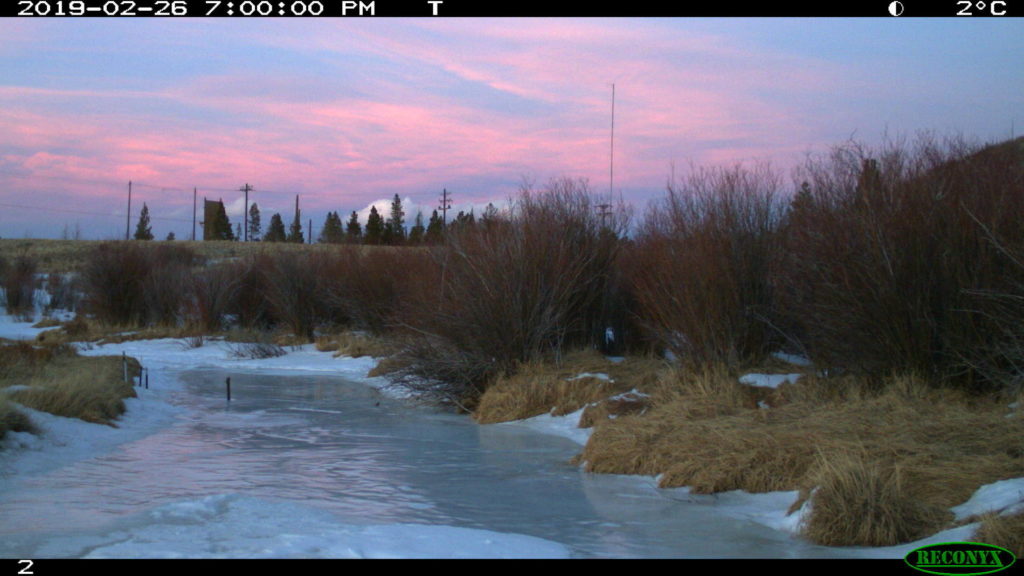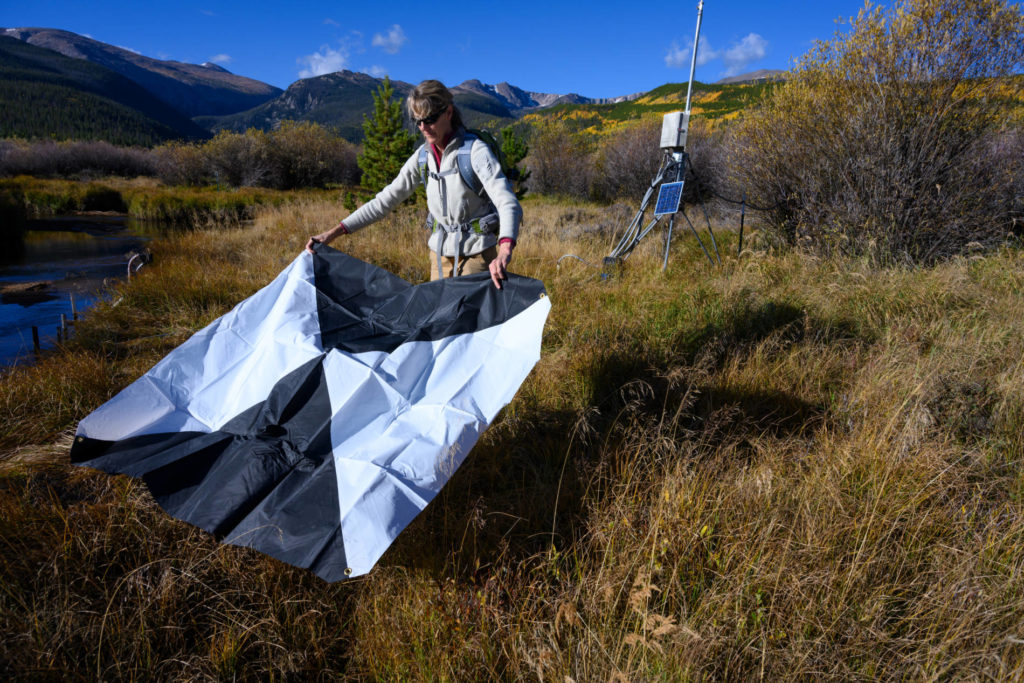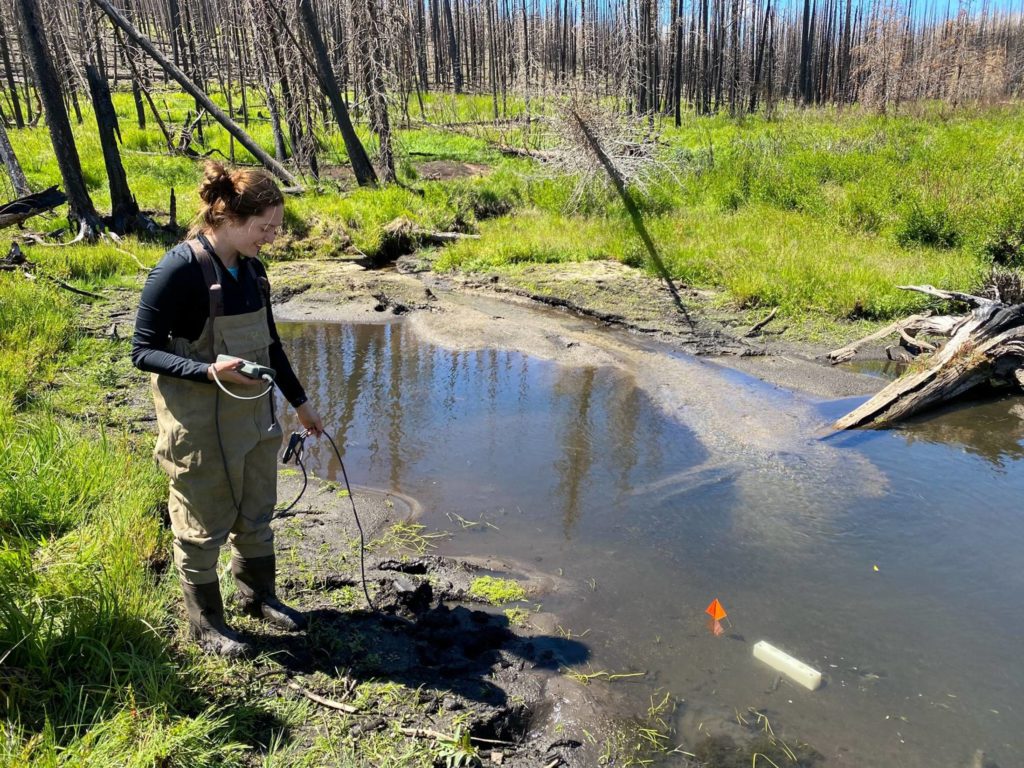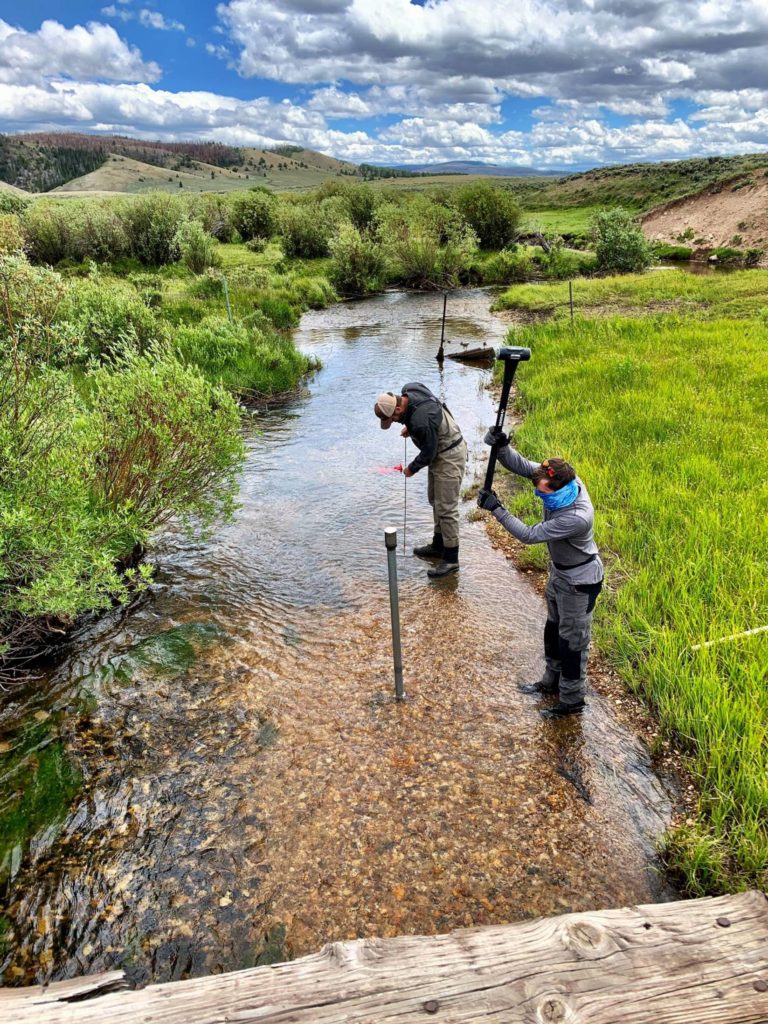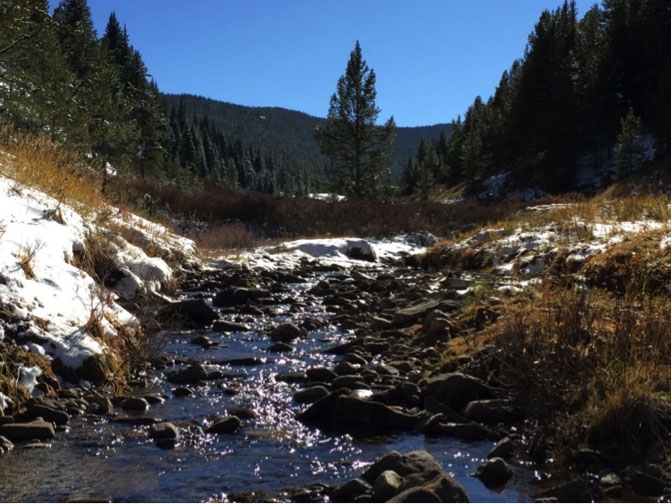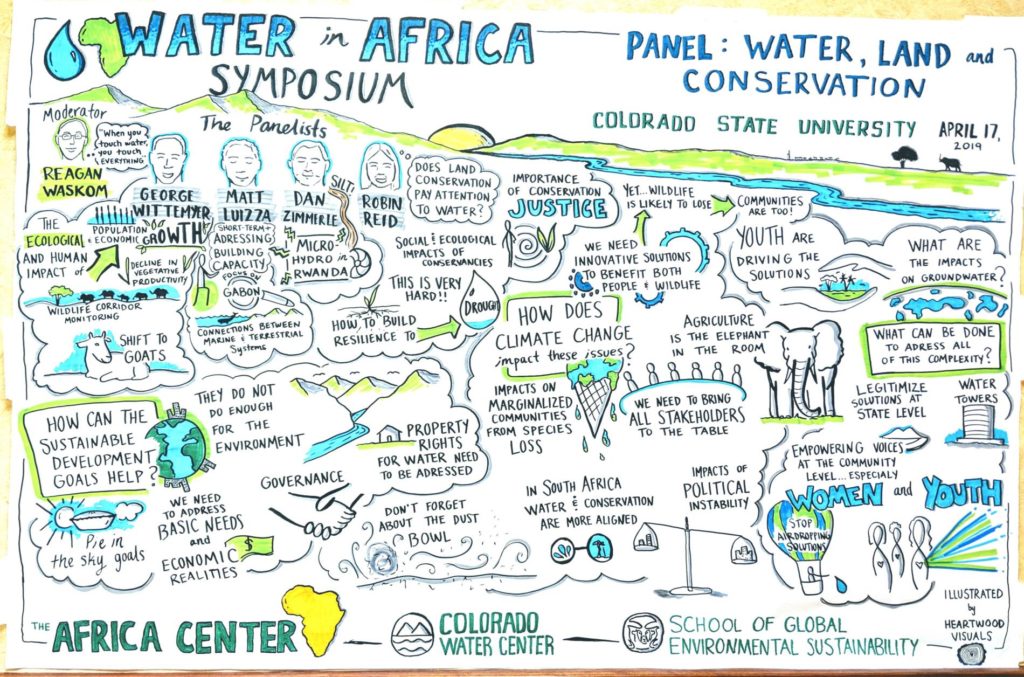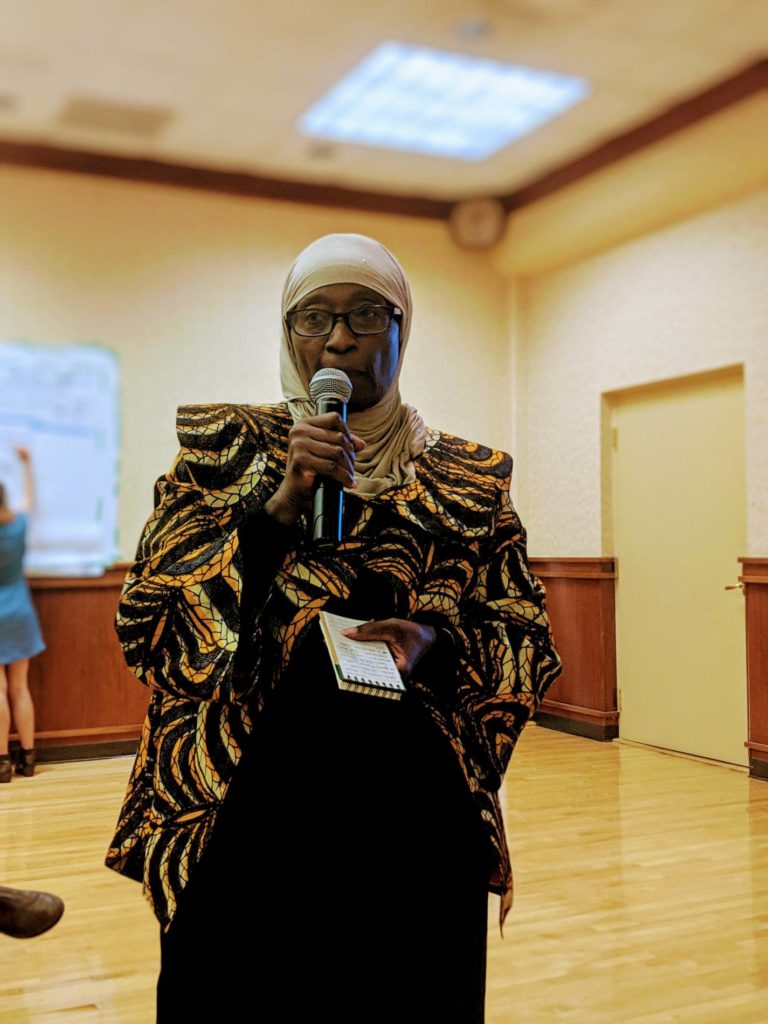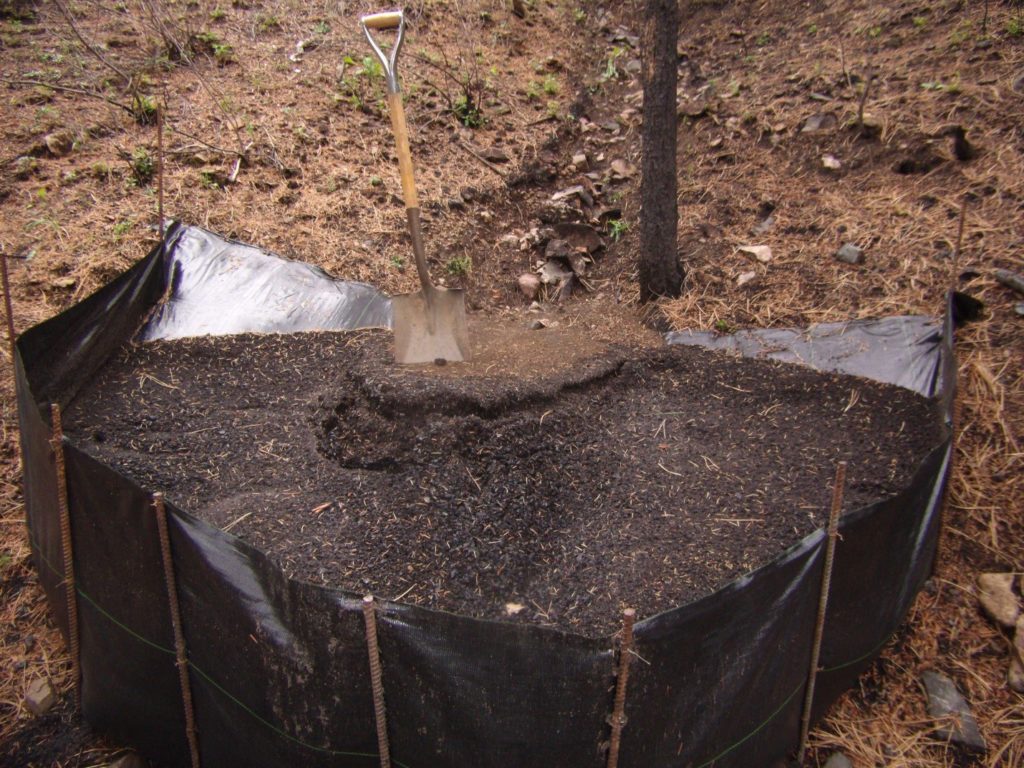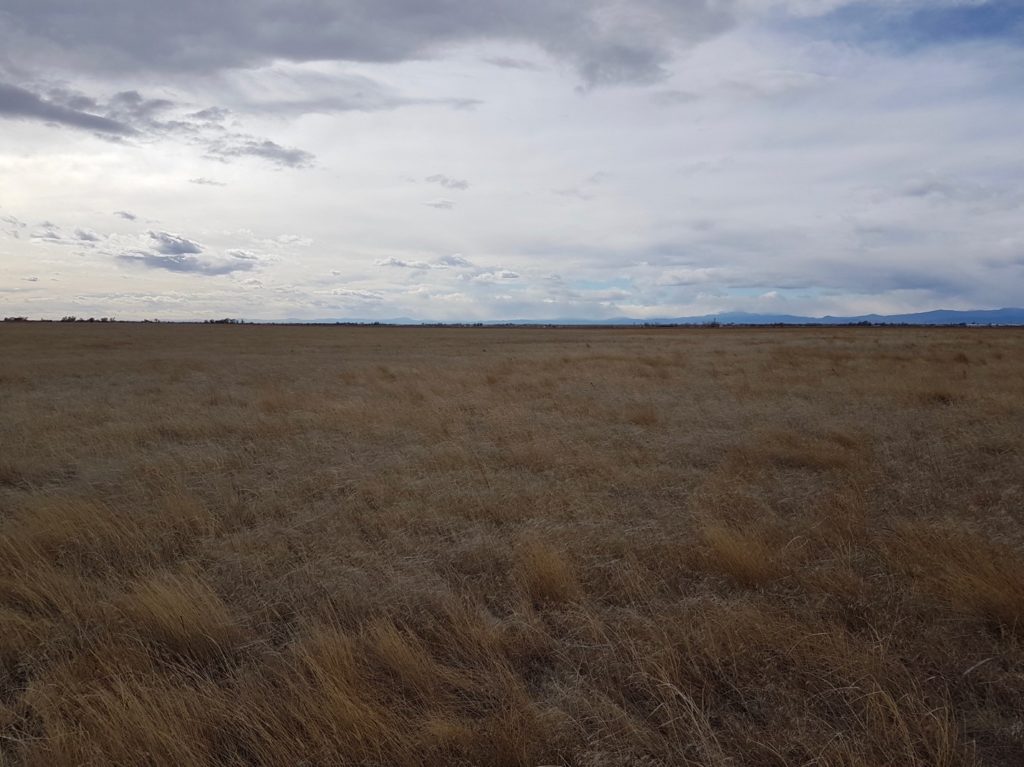Water Research Teams
Photo courtesy of Patrick Byrne, Soil and Crop Sciences, CSU, 2014 Water Research Team project: Drought Stress Adaptation in Winter Wheat through Soil Microbial Interactions and Root Architecture
Each year CoWC funds a select number of Water Research Teams through our CSU Competitive Grant Program to catalyze innovative research through interdisciplinary collaboration and creative scholarship among faculty, researchers, and students. These awards provide a unique opportunity to accelerate progress in research and enable the academic and experiential realm of water resources at CSU. Since 2013, we have funded 35 water research team projects.
Read about our newest grantees HERE!
Past Research Teams 2020- 2021
PI: Sara Rathburn | Professor, Department of Geosciences
Building a long-term watershed research site at CSU Mountain Campus
Co-PIs
Kira Puntenney-Desmond, Stephanie Kampf, Steven Fassnacht, Matthew Ross, Ecosystem Science and Sustainability
Michael Ronayne, Daniel McGrath, Geosciences
Ryan Morrison, Civil and Environmental Engineering
Kristen Rasmussen, Atmospheric Science
Seth Webb, CSU Mountain Campus
Jared Heath, City of Fort Collins
Sara Rathburn lead an interdisciplinary team of faculty, students, and partners to build a long-term watershed research site at CSU Mountain Campus. Dr. Rathburn and researchers studied the headwaters of the South Fork of the Cache la Poudre River to make that information available for wider use. Through this project, the team coordinated data collection, storage, and analysis as well as developed teaching content for CSU and the Poudre School District.
PI: Michael Wilkins | Associate Professor, Department of Soil and Crop Sciences
Beaver-generated wetlands as ecosystem control points for post-fire transport of sediment, carbon, nutrients, and toxic metals into Rocky Mountain headwaters
Co-PIs
Thomas Borch, Soil and Crop Sciences
Charles Rhoades, United States Forest Service
Mike Wilkins partnered with CSU faculty and the U.S. Forest Service to conduct field and laboratory research to better understand water quality changes in post-fire landscapes. Specifically, the team investigated ecosystem impacts of burned landscapes in beaver-generated wetlands in Colorado and Wyoming.
Past Research Teams 2019- 2020
PI: Aditi Bhaskar | Assistant Professor, Department of Civil and Environmental Engineering
Harnessing the power of the crowd to monitor urban street flooding
Co-PIs
Greg Newman, Natural Resource Ecology Laboratory
Stephanie Kampf, Department of Ecosystem Science and Sustainability
Sam Zipper, University of Victoria, Kansas Geological Survey
This research team will use community monitoring of urban street flooding in order to generate greater temporal and spatial coverage of flood-related data than would be possible with installed sensors. This data will allow for analyses of the factors that lead to street flooding. This pilot project will also provide a foundation for integrating social media with Flood Tracker.
PI: John Hribljan | Research Scientist II, Department of Forest and Rangeland Stewardship
Hydrologic drivers of peatland development and carbon accumulation in western Washington
Co-PIs
Jeremy Shaw, David Cooper, Department of Forest and Rangeland Stewardship
Jason Sibold, Department of Anthropology
Joe Rocchio, Washington Department of Natural Resources, Natural Heritage Program
Julie Loisel, Texas A&M University, Department of Geography
This research team will investigate how peatlands respond to changes in precipitation and temperature over time. Despite peatlands’ significant role in global carbon storage, uncertainties remain in how these systems respond to hydrologic alterations from changing climate and land use. This research will inform regional wetland management and has far reaching implications for more northern peatlands.
PI: Kristen Rasmussen | Assistant Professor, Department of Atmospheric Science
The current and future state of water resources for the Colorado Rocky Mountains
Co-PIs
Steven Fassnacht, Department of Ecosystem Science and Sustainability
Daniel McGrath, Department of Geosciences
Graham Sexstone, U.S. Geological Survey, Colorado Water Science Center
This research team will use high-resolution modeling to investigate how predicted changes in climate will modify the snowpack and hydrology of the Colorado Rocky Mountains. This work will produce a better understanding of future snow dynamics given its complex interactions with the atmosphere, land cover, and terrain, and will inform management of the ecological resources of Rocky Mountain National Park and surrounding areas.
Past Research Teams 2018- 2019
PI: Paul Evangelista | Research Ecologist, Natural Resource Ecology Laboratory and Assistant Professor, Department of Ecosystem Science and Sustainability
Measuring impacts of forest disturbance on streamflow
Co-PI
Tony Cheng, Forest and Rangeland Stewardship and Colorado Forest Restoration Institute
Wildfires and bark beetle outbreaks alter the structure of forests, changing snow and vegetation patterns over large mountain landscapes and potentially influencing the timing and magnitude of streamflow in affected watersheds. Dr. Evangelista’s team of forest ecologists and hydrologists set out to quantify the impact of forest changes on streamflow across Colorado. Previous work has found mixed conclusions regarding the impacts of forest disturbance on streamflow. The effects can differ based on topography, climate, severity of the impact, precipitation in a given year, and whether the precipitation falls as snow or rain (Creeden et al, 2014; Biederman et al, 2015). To try to quantify these effects, we generated forest disturbance maps delineating severity and timing of bark beetle outbreaks (2001-2013), and summarized wildfire data (Monitoring Trends in Burn Severity, 1984-2015). For watersheds that have stream gages with complete annual records for the years of disturbance data (US Geologic Survey, Colorado Division of Water Resources), we analyzed the relationship between streamflow anomalies and disturbance type and severity, while controlling for climatic influences on streamflow.
PI: Jay Ham | Professor, Department of Soil and Crop Sciences
Next generation soil moisture measurement technology for research, water management, and environmental monitoring
Co-PIs
Allan Andales, Maria Capurro, Department of Soil and Crop Sciences
Russ Schumacher, Peter Goble, Department of Atmospheric Science and Colorado Climate Center
Tom Sale, Department of Civil and Environmental Engineering
The goal of this project is to develop low-cost, Internet-of-things (IoT), soil moisture measurement systems (sensors and data logging) that can provide real-time water content data for a broad range of research and applied applications. The PIs will leverage new developments in electronics, 3D-Printing, underground sensor networks, and internet-of-things connectivity to meet this goal at a very low price point. Prototypes will be tested in the laboratory and in the field at weather stations, greenhouses, and remediation sites. Results will be open-sourced so they can be duplicated and improved upon by others working in this space.
PI: Pat Keys | Research Scientist, School of Global Environmental Sustainability
Who changes the rain? Linking the social dynamics of pastoralism and atmospheric water recycling to enable Sustainable Development Goal achievement
Co-PIs
Kathleen Galvin, Department of Anthropology and The Africa Center
Randall Boone, Deptartment of Ecosystem Science and Sustainability
During 2018-2019, the Water Research Team (WRT) for “Who changes the rain?” developed new research directions, aimed to secure external funding, and hosted a symposium on Water in Africa. A key goal was to develop a new, interdisciplinary CSU-based team of scientists who would explore the coupled dynamics of how changes to landscapes (e.g. deforestation) can modify the atmospheric water cycle, and subsequently impact subsistence communities downwind. The primary research question of this WRT was: What are the potential consequences that could result by achieving certain Sustainable Development Goals (SDGs) in Kenya? In this case, we were focused on SDG #15, regarding sustainability of “Life on Land” — and more specificially, whether changes to forest cover in Kenya might lead to unexpected changes in the atmospheric water cycle, including how much rain falls on both agricultural and rangelands, elsewhere in Kenya.
PI: Stephanie Malin | Associate Professor, Department of Sociology
Food-Energy-Water Systems (FEWS) justice: urban and rural corridors in the Rio Grande-Bravo Basin (RGB)
Co-PIs
Melinda Laituri, Faith Sternlieb, Department of Ecosystem Science and Sustainability
Constance DeVereaux, LEAP Institute for the Arts
Steve Mumme, Department of Political Science
Josh Sbicca, Department of Sociology
Sybil Sharvelle, Department of Civil and Environmental Engineering
The Rio Grande/Rio Bravo (Rio Grande-Bravo or RGB) River Basin flows 1,896 miles from its headwaters in the San Juan Mountains of Southern Colorado. The populations and socio-economic fabrics of communities along the Rio Grande-Bravo River Basin are equally diverse, given that the basin includes multiple U.S. and Mexican states, and 18 Tribal Pueblos of New Mexico and four additional Tribal nations. Water industries in the Basin include agriculture (water use estimated at 75% of available supplies), oil and gas, tourism and recreation, and commercial fishing. These pressures set the context for an examination of competing demands for water through an environmental justice lens.
After conducting our initial research and fieldwork, Dr. Malin and the team held the New Mexico Tribal Environmental Justice Roundtable, which was attended by about 30 Pueblo/ Tribal Environmental Professionals, who represented 10 of the 19 different Pueblos across New Mexico. People’s health is affected in most of these cases of environmental injustice, and that this is a deeply held concern in the communities. Youth and women from Tribal communities play important roles in addressing environmental and climate injustice, and need to gain more influence. People’s concerns over water quality and water scarcity intersect with almost every other experience of environmental injustice that was mentioned.
PI: Ryan Morrison | Assistant Professor, Department of Civil & Environmental Engineering
Development of a novel framework for estimating moisture susceptibility attributable to natural flood hazards in the U.S.
Co-PIs
Ellison Carter, Department of Civil and Environmental Engineering
Kristen Rasmussen, Department of Atmospheric Science
Brooke Anderson, Department of Environmental and Radiological Health Sciences
Flooding events in the U.S. cause large economic and health burdens each year and are the nation’s second-deadliest weather-related natural disasters, with national economic losses conservatively estimated to be at least $50 billion annually. Strong climatological, meteorological, and changing land-use evidence indicates that the frequency and severity of flooding are intensifying in many regions and will continue to increase in the future. This research seeks to alleviate such negative impacts through understanding of geographic flooding trends.
The frequency and spatial distribution of flood types varied in each basin. When housing stock attributes were spatially analyzed within flood boundaries for 20-, 50-, and 100-year events, we unsurprisingly found that more homes may be impacted by flooding during the 100-year event compared to smaller events. In addition, the spatial distribution of housing types impacted by different sized floods varied in each basin. These findings highlight the need to examine more fundamental hydrometeorological processes of flooding across large spatial scales and to explore the disparate impacts of flooding on different demographic groups.
Learn more about the impactful research our grantees have accomplished in these issues of Colorado Water.
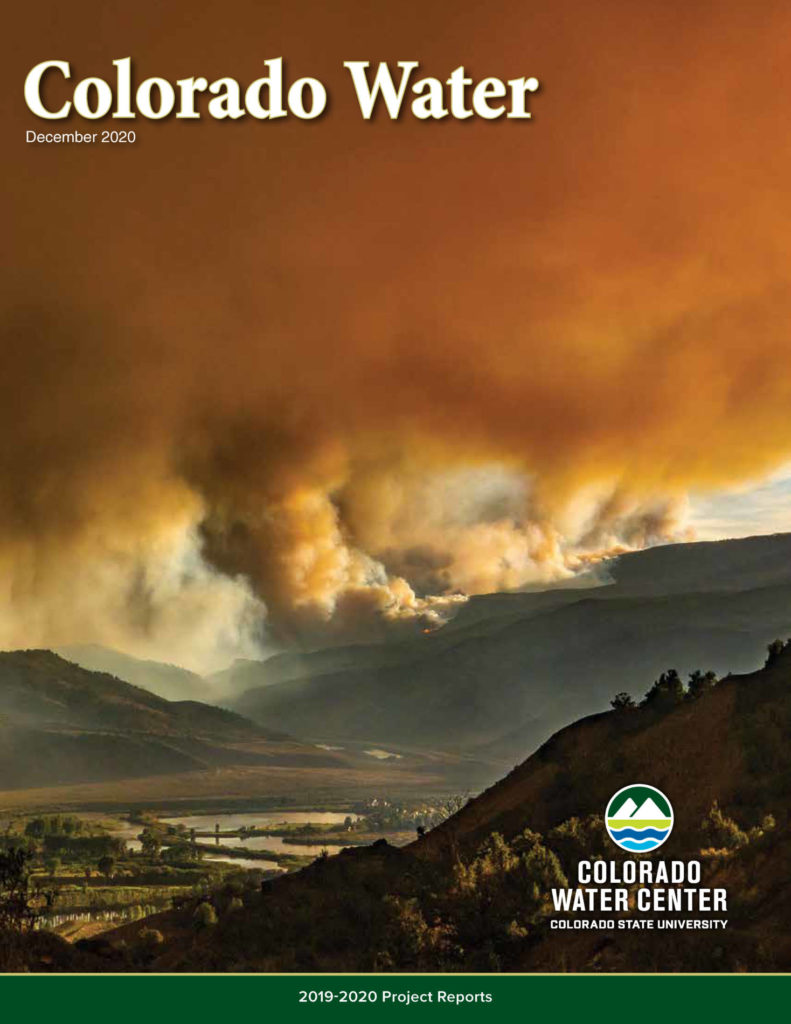
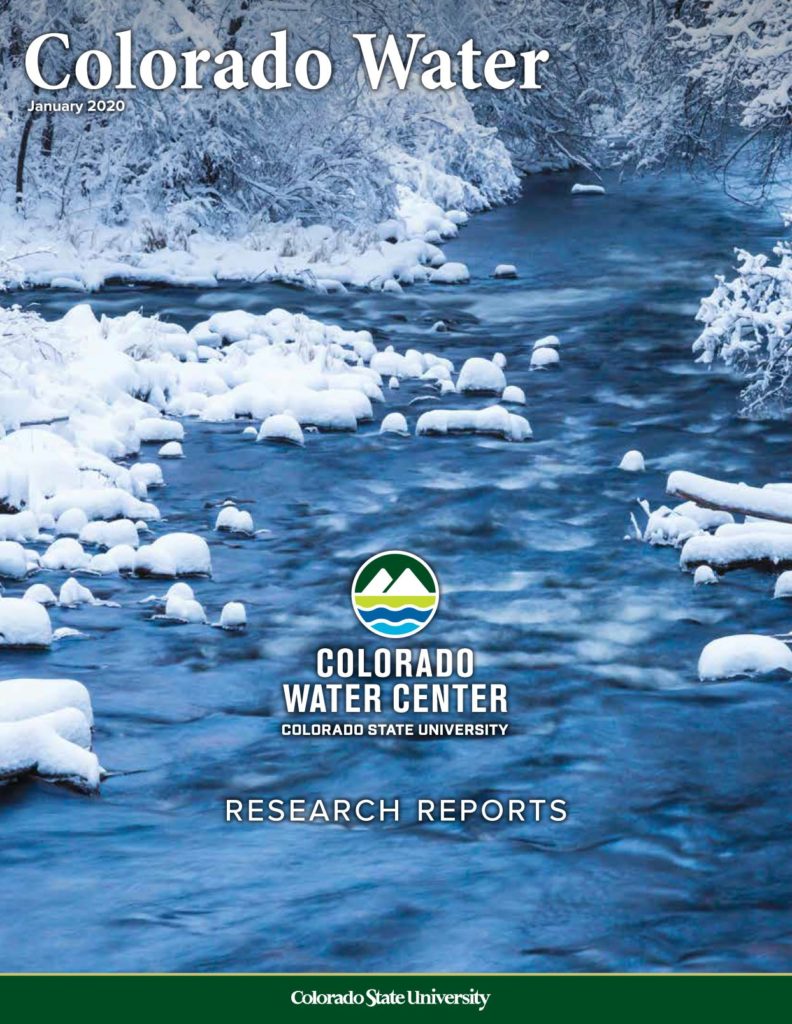
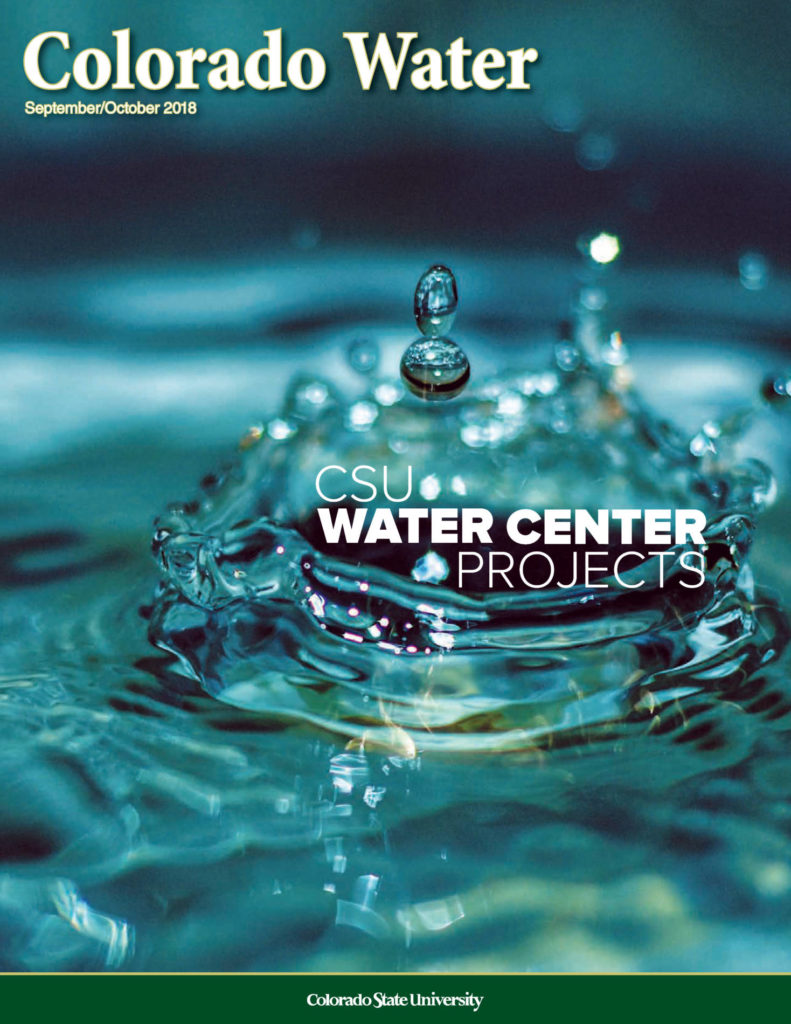
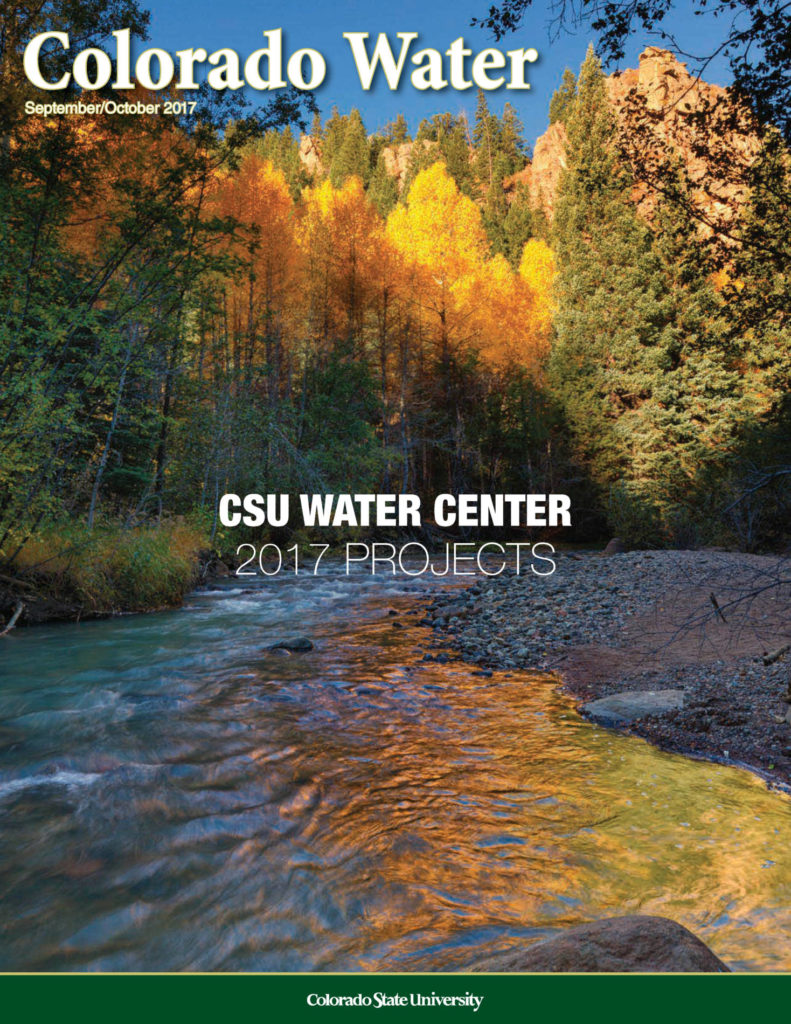
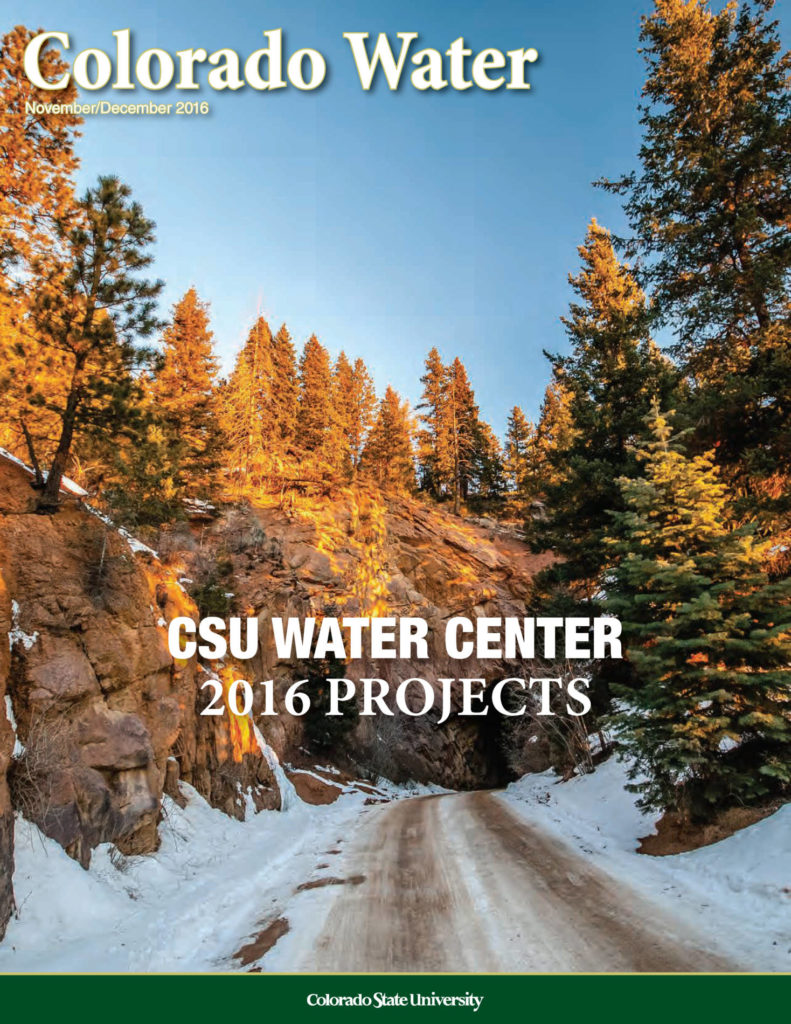
Research Teams Archive
PI: Tony Cheng | Professor, Department of Forest and Rangeland Stewardship
A Systems Modeling Approach to Quantify Forest Fuel Treatment Effects on Wildlife Severity and Post-Fire Erosion
Co-PIs
Benjamin Gannon, Brett Wolk, Colorado Forest Restoration Institute
Kelly Jones, Human Dimensions of Natural Resources
Stephanie Kampf, Lee MacDonald, Ecosystem Science and Sustainability
Katherine Mattor, Yu Wei, Forest and Rangeland Stewardship
Peter Nelson, Civil and Environmental Engineering
Water providers and watershed coalitions are increasingly interested in proactively managing forest fuels in order to reduce the severity of future wildfires and, in turn, reduce the negative post-wildfire impacts to water resources. In hopes of enhancing their accuracy, this research identified the limits of models currently used to predict post-fire impacts. Such models cannot precisely predict sediment yields and erosion at very fine scales. Their performance also worsens when using remote sensing and GIS to characterize bare soil and terrain—knowledge of which factors would greatly improve erosion model prediction accuracy. To address these shortcomings, the team is finalizing an integrated fire, erosion, and sediment transport model for characterizing wildfire risk to water supplies. Already this work has supported fuel treatment decisions in a large watershed (Peaks to People Water Fund, working on the Cache la Poudre) and has been used to assess the effectiveness of post-fire watershed rehabilitation treatments for an ongoing project with the City of Boulder.
PI: Will Clements | Professor, Department of Fish, Wildlife, and Conservation Biology
Developing a Comprehensive Understanding of Metal Impacts on Stream Ecosystems in Colorado
Co-PIs
Edward Hall, Natural Resource Ecology Laboratory
Katy Warner, NRM Field Institute, Colorado Mountain College
This research explored what factors influence the success of restoration efforts in metal-contaminated streams in the Upper Arkansas River Basin in southern Colorado. Dr. Clements and the team analyzed water and tissue samples of macroinvertebrate communities, confirming a continued decline in trace metals—the result of ongoing restoration in the area. While the status of many species has improved, the team found downstream communities to be significantly different compared to those upstream; the former have shifted to an alternative state of stability. Downstream macroinvertebrate communities had developed—and retained—a substantially higher metal tolerance than their upstream counterparts, despite significant improvements in water quality. This tolerance may have come at a price for these animals: they are much more sensitive to other stressors such as diesel fuel. We do not yet know if they will ever fully recover. This long-term assessment of water quality and macroinvertebrates represents the most comprehensive and continuous record of physical, chemical, and biological data available for a stream ecosystem in North America, and can be used to assess restoration effectiveness and inform treatment guidelines for water managers.
PI: Susan De Long | Associate Professor, Department of Civil and Environmental Engineering
Biotreatment of Pharmaceuticals and Personal Care Products during Water Treatment for Reuse: Ensuring Human Safety at the Food-Water Nexus
Co-PIs
Karen Rossmassler, Department of Civil and Environmental Engineering
Jessica Prenni, Proteomics and Metabolomics Core Facility
Corey Broeckling, Proteomics and Metabolomics Core Facility and Department of Horticulture and Landscape Architecture
Pharmaceuticals and personal care products (PPCPs) are routinely detected in treated wastewater, surface water, and even sometimes potable water supplies—representing a potential risk to human health if consumed in drinking water or irrigated food supplies. While some physical and chemical treatment technologies exist (advanced oxidation or reverse osmosis, for example), they are expensive and energy-intensive, and can produce problematic waste streams. Biological PPCP removal, on the other hand, can use microorganisms to degrade contaminants and can be designed to have a minimal carbon footprint and no problematic waste streams. However, commercially viable options for bio-treatments are not yet available. This research explored which microorganisms are best at transforming or removing a range of PPCP chemicals commonly found in water, and identified the specific biotransformation mechanisms (i.e., genes and enzymes) involved in such processes of biodegradation. Efforts like these are critical to advancing biological PPCP treatment technologies and ultimately bringing them into widespread practice.
PI: Michael Falkowski | Associate Professor, Department of Ecosystem Science and Sustainability
Quantifying the Scope and Impact of Permanent Agricultural Dry-Up Due to Rural to Urban Water Transfers
Co-PIs
Dale Manning, Department of Agricultural and Resource Economics
Drew Bennett, Department of Fish, Wildlife, and Conservation Biology
Sarah Parmar, Colorado Open Lands
Steven Filippelli, Natural Resources Ecology Laboratory
In order to meet growing water demands in urban areas across the American West, water rights are increasingly being transferred from agriculture to municipal uses—a process which typically results in the permanent dry-up of previously irrigated agricultural land. The team piloted an approach using remote sensing data and an automated data processing method to identify farms that have experienced agricultural dry-up, and found that nearly 100,000 acres of irrigated farmland in the South Platte Basin had dried up between 1984 and 2016. During the same period, water rights historically used to irrigate more than 86,000 acres of farmland in the Basin were transferred from agricultural to municipal uses. As urban water demands rose (and were met via these transfers), regional economic activity increased by $250 million. Clearly, dry-up has significantly influenced the landscape in the South Platte Basin, but the economic impacts of these changes are small relative to the size of the regional economy. These findings imply dry-up will continue to occur in the western portion of the Basin, but agriculture is likely to persist in the lower portion. The research also supports policies that can facilitate the conversion of dried land to valuable uses (such as recreation) to broaden the benefits to the growing population in the Basin.

